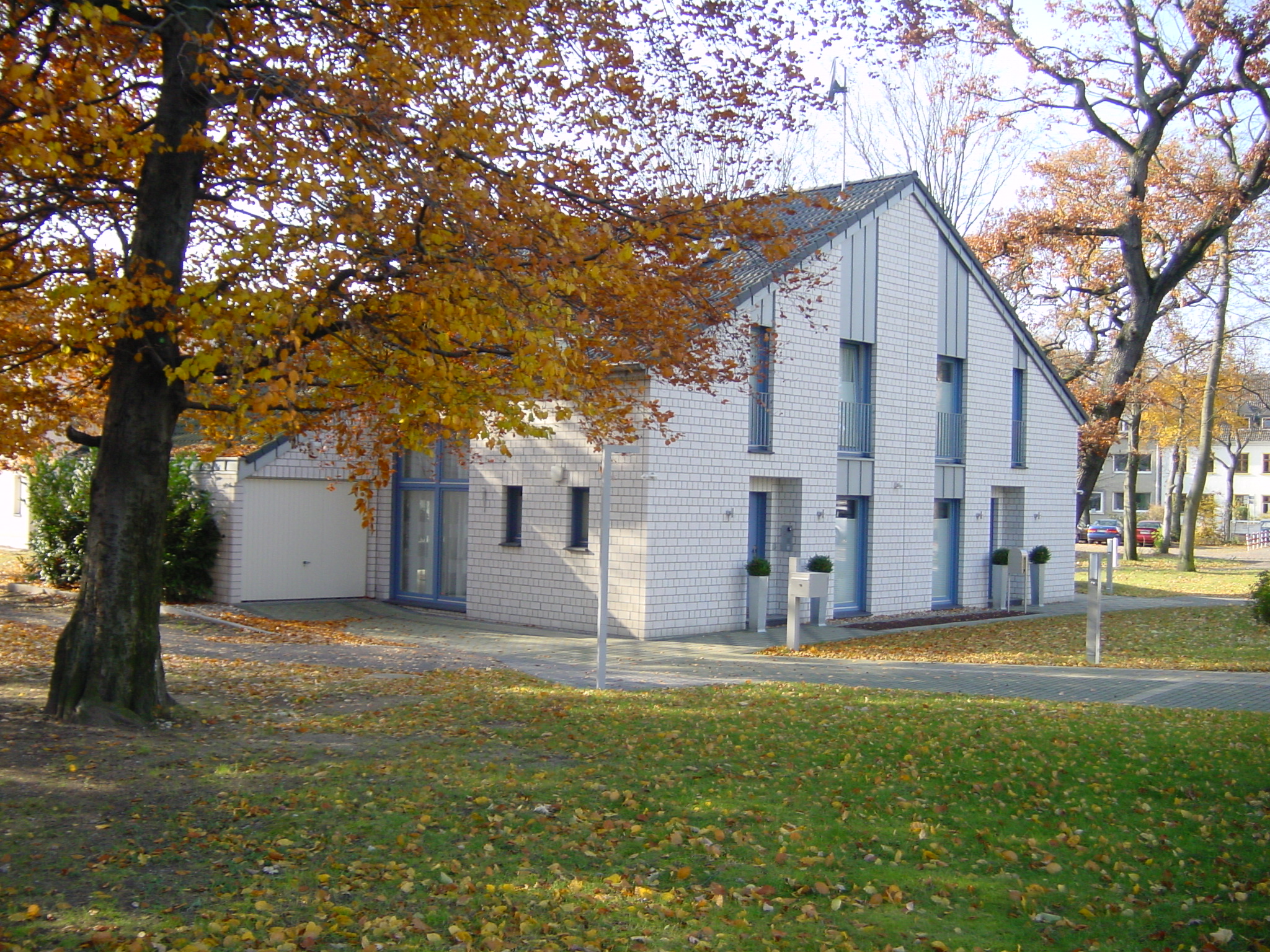The History of Fraunhofer-inHaus-Center
Between 1993 and 1995, initial ideas and concepts for the inHaus-Center were already being developed at the Fraunhofer Institute for Microelectronic Circuits and Systems IMS. As part of a business-oriented strategic alliance under the management of Fraunhofer IMS, five Fraunhofer Institutes developed the technological blueprint for the system integration of inHaus and the network of inHaus business partners and institutes from 1996 to 1998. On April 3, 2001, after a 1998-1999 planning project, the inHaus1 research facility for the Living business unit was opened on a quarter-acre site in the vicinity of Fraunhofer IMS and the University of Duisburg.
The first operating phase, from 2001 to 2005, was so successful that it was decided to expand activities into the commercial building sector by creating another five business units. New ideas and concepts were generated for a second research facility, inHaus2, to accommodate the appropriate innovation laboratories in the form of intelligent room systems, along the lines of the Living laboratory in the inHaus1 facility.
Fraunhofer IMS and the Fraunhofer Institute for Building Physics IBP developed these ideas further, together with seven other Fraunhofer Institutes. Work started on the ambitious project to build inHaus2 in April 2007 with the support of the EU, the German Federal Ministry for Education and Research (BMBF), the headquarters of the Fraunhofer-Gesellschaft, the federal state of North Rhine-Westphalia (NRW) and the city of Duisburg, and additional support from well-known industry partners. Version 1.0 of inHaus2 was completed in October 2008; the official opening took place on November 5, 2008.
Meanwhile the network consists of about 100 partners of industry and economy and tree involved Fraunhofer-institutes, which pursue research and develop together in the following business units: Health and care, living, energy and building technology and sustainability. So in july 2013 the about 350 sq m comprehensive “Krankenhaus der Zukunft” (Hospital Engineering) has opened in inHaus2. It resulted in cooperation with 60 partners of the industry, 8 hospitals and 4 Fraunhofer-institutes.
About a year later, in june 2014, in the framework of the “inRaum-Systemprojekt” arose the Living Lab “Büro der Zukunft” on about 80 sq m, in which partners of industry and various Fraunhofer-institutes worked together on intelligent and integrated system solutions for the application field office.
 Fraunhofer-inHaus-Center
Fraunhofer-inHaus-Center
